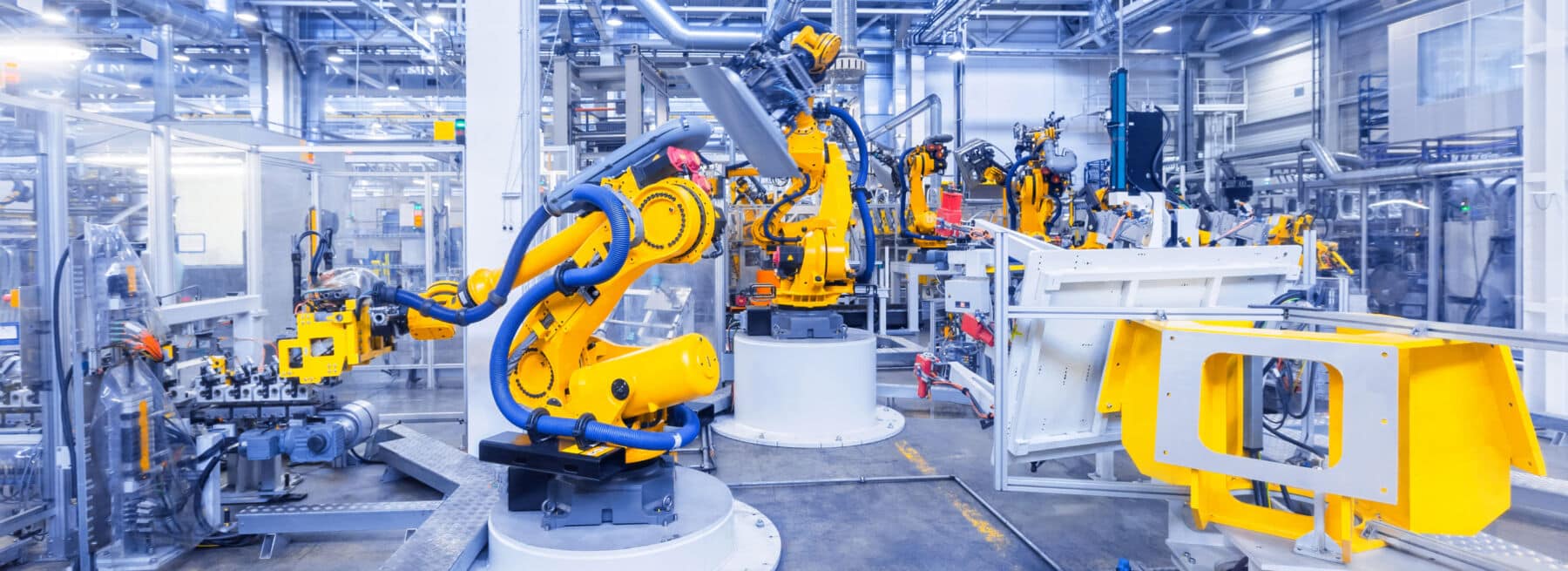The landscape of manufacturing is undergoing a revolutionary transformation. Propelling this transformation is the integration of advanced technologies that promises to redefine efficiency, productivity, and overall operational capabilities.
Among the myriad innovations shaping the future, live video monitoring stands out as a pivotal force driving advancements in manufacturing processes. Let’s take a closer look at the emerging technologies that are poised to change live video monitoring for manufacturing, including the implications for the industry.
Real-Time Remote Monitoring
Real-time video surveillance with monitoring consists of security cameras installed around the manufacturing plant with human and artificial intelligence remotely watching the cameras in real-time. Therefore, there is an instant data transmission of the video from the manufacturing facility to the remote facility where trained monitoring operators watch the cameras. This can greatly boost operational efficiency and security.
One of the primary advantages of remote video surveillance in manufacturing lies in its ability to provide a comprehensive view of the production floor. Monitoring operators and managers can remotely observe equipment performance, production lines, and overall operational efficiency. Leaders can gain the ability to make decisions quickly and proactively resolve any issues that come up. Having this instant oversight could minimize downtime, reduce the risk of equipment failures, and optimize resource allocation.
Moreover, integrating the Internet of Things (IoT) devices can complement real-time remote monitoring. These interconnected devices facilitate the seamless exchange of data, offering insights into machine health, production rates, and energy consumption. Leaders in manufacturing can harness this real-time data to implement predictive maintenance strategies, identifying potential issues before they escalate and cause disruptions to production.
Inventory management is another area where real-time remote monitoring can be invaluable in manufacturing. The live monitoring of stock levels, production rates, and order fulfillment in can help leaders to optimize inventory levels, cut waste, and enhance supply chain efficiency. These make it possible to find cost savings while improving customer satisfaction because this can help the manufacturing facility meet demand more accurately and with greater agility.
Furthermore, real-time remote monitoring helps enhance quality control by allowing manufacturers to monitor and analyze production processes as they happen. Leaders can immediately identify and address any deviations or anomalies in product quality. The benefit is that they can ensure that only products meeting the highest standards reach the market.
Advanced Video Analytics
Video analytics is a pivotal component of the future of manufacturing, enhancing the capabilities of live video monitoring through the application of advanced algorithms and artificial intelligence. This technology represents a shift in how manufacturers extract meaningful insights from the vast amounts of data collected from the video feeds. Here are the advantages of working with video analytics.
Overcomes traditional surveillance limitations
Traditional surveillance has limited area coverage and its costs have soared. Switching to video analytics can overcome these limitations because video analytics turns live video monitoring into a sophisticated tool for decision-making and process optimization.
By taking advantage of machine learning algorithms, video analytics can analyze video streams in real-time, automatically identifying patterns, variances, and relevant events within the manufacturing environment and its surroundings. This level of automation can reduce the burden on human operators, allowing them to focus on critical decision points rather than continuously monitoring video feeds.
Helps with predictive maintenance
One of the key benefits of video analytics in manufacturing is its contribution to predictive maintenance. By continuously analyzing video data from cameras positioned on machinery and equipment, the system can help identify early signs of wear and tear, potential malfunctions, or deviations from normal operating conditions. This proactive approach can allow manufacturers to schedule maintenance activities precisely when needed, minimizing downtime and extending the lifespan of equipment.
Supports quality control
Video analytics also help with quality control. The technology can automatically assess product quality by analyzing visual data from the production line. It can identify defects, changes from specifications, or discrepancies in color and shape, ensuring that only products meeting the highest standards move forward in the manufacturing process. This not only enhances the overall quality of the products but also reduces waste and rework.
Bolsters safety and security
Video analytics contribute to security and safety in manufacturing facilities. It can help detect unauthorized personnel, monitor for safety compliance, and alert operators to potential hazards.
This proactive surveillance technology can enhance overall operational safety and security, helping to mitigate risks and ensure a secure working environment for employees. In short, video analytics helps reduce costs and increase productivity. Aside from helping ensure worker safety, video analytics helps confirm the facility remains in compliance with regulatory requirements.
Integrates with other technologies
As the previous examples of machine learning and Internet of Things (IoT) have indicated, combining live video monitoring with other industry 4.0 technologies offers a comprehensive overview of manufacturing operations. For instance, pairing video analytics with IoT sensors on machinery allows for a holistic approach to predictive maintenance. The system can analyze both visual and sensor data to help predict and prevent equipment failures more accurately.
Integrating video analytics with other data sources helps leaders make decisions quickly and confidently. It can be integrated with automation and robotics to monitor the manufacturing processes to find opportunities for improvement that could lead to increased production speeds and reduced errors.
The integration of cameras, live monitoring, and video analytics also helps protect assets and prevent losses with continuous monitoring and real-time alerts.
5G Technology
The advent of 5G technology amplifies the capabilities of live video monitoring in manufacturing. The fifth generation of wireless technology, 5G, brings unparalleled speed, low latency, and high capacity, making it a game-changer for real-time applications, especially in the realm of live video monitoring.
The ultra-fast and low-latency connectivity provided by 5G enables seamless streaming of high-definition video feeds, ensuring that real-time data is transmitted without interruptions. This can facilitate quicker decision-making, improve response times, and enhance the overall effectiveness of live video monitoring systems on the manufacturing floor.
One of the primary advantages of 5G in the context of live video monitoring is its data transmission speeds. With faster upload and download speeds compared to its predecessors, 5G supports the seamless streaming of high-definition video feeds. This superior speed helps make sure that live video data from manufacturing processes, surveillance cameras, or other monitoring systems can be transmitted in real-time without delays or buffering.
Low latency is another impactful feature of 5G that greatly benefits live video monitoring applications. The reduced lag in data transmission means that the information from the monitored environment reaches the user’s device almost instantly. In manufacturing, this low latency facilitates quicker decision-making, allowing operators to respond promptly to changes on the production floor, identify issues, and implement corrective measures in real-time.
The high capacity of 5G networks is particularly advantageous in scenarios where multiple devices are concurrently streaming live video feeds. In manufacturing facilities with numerous cameras and sensors, 5G’s ability to handle a large volume of data traffic helps monitoring infrastructure remain robust and responsive.
The deployment of 5G in live video monitoring also has implications for remote operations. The combination of high speed and low latency allows for more immersive and reliable remote monitoring experiences. This is especially relevant in situations where experts need to remotely assess manufacturing processes or troubleshoot issues, contributing to increased operational efficiency and reduced travel requirements.
Edge Computing
Edge computing is modernizing live video monitoring by decentralizing data processing and analysis. This often results in faster response times and improved efficiency. Unlike traditional cloud-based approaches, where data is sent to a centralized server for processing, edge computing involves performing computations closer to the data source – at the “edge” of the network.
In the context of live video monitoring, edge computing addresses challenges related to latency and bandwidth by enabling real-time analysis of video feeds directly at the location of the cameras or sensors. This proximity reduces the time it takes to process and act upon the information, making it particularly beneficial for applications where immediate responses are crucial.
One key advantage of edge computing in live video monitoring is the ability to filter and process data locally. Instead of transmitting all raw video footage to a central server, edge devices can preprocess the data, extracting relevant information and sending only actionable insights to the cloud or a central server. This minimizes bandwidth usage and reduces the burden on the network infrastructure.
Moreover, edge computing can enhance privacy and security in live video monitoring. Since sensitive data can be processed locally, it reduces the transmission of potentially confidential information over the network. This is especially relevant in scenarios where privacy regulations and security concerns are paramount, such as in surveillance systems or manufacturing processes involving proprietary information.
The scalability of edge computing is another notable benefit. Distributing computing tasks across edge devices allows for the seamless integration of additional sensors or cameras without overwhelming the central processing infrastructure. This scalability is crucial in dynamic environments where the number of monitoring devices may vary.
The Future of Manufacturing
The future of manufacturing is intricately linked to the seamless integration of emerging technologies in live video monitoring. From the convergence of IoT and video analytics to the capabilities of 5G technology, these innovations are reshaping the industry’s landscape.
As manufacturers embrace these technologies, they stand to gain unprecedented insights, operational efficiency, and a competitive edge in an increasingly dynamic global market. The journey towards the future of manufacturing is marked by a commitment to harnessing the transformative power of live video monitoring technologies.
To see the future of manufacturing technologies in action, check out the videos of Stealth Monitoring to learn how video surveillance benefits manufacturing. Want to learn more? Contact us.
Texas Private Security License Number: B14187
California Alarm Operator License Number: ACO7876
Florida Alarm System Contractor I License Number: EF20001598
Tennessee Alarm Contracting Company License Number: 2294
Virginia Private Security Services Business License Number: 11-19499
Alabama Electronic Security License # 002116
Canada TSBC License: LEL0200704

